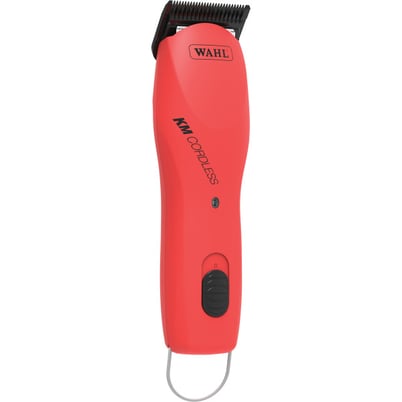Is body clipping right for your horse, or would a trace clip be better?
Your horse may appreciate a haircut, but how do you know what style is the best for him? Body clipping trims everything, while the dozens of trace clipping patterns only trim down bits and pieces of your horse's coat.
Reasons to Clip Your Horse
The health and comfort of your horse are a top priority. Every step of your grooming and clipping process will turn out gorgeous when you focus on your horse. The shine and bloom are just a bonus! This holds true for clipping, too.
For show horses, clipping is sometimes helpful to show off your horse in the ring. Many horses, especially those in hot climates, are clipped in the warmer months. Show days are long and hot, and full body clips help some horses stay cool. Chrome legs also pop with bright white when they are clipped.
Some horses need help thermoregulating all year long. Anhidrosis can significantly reduce or stop sweating altogether, which leads to dangerous overheating. A shorter coat traps less heat and allows cooling baths to be more effective.
Genetically fuzzy horses often don't match the climate where they live. Becoming too hairy for the season, even in winter, is often uncomfortable and can create skin problems and infections. Horses bred to withstand extreme cold are not comfortable in warmer winters.
Horses with Cushing's disease also face hair coat challenges. The hair is thick, long, and doesn't shed properly. A summer coat on a Cushing's horse might look like a winter coat on another. Clipping helps alleviate shedding troubles.
Look at the big picture around your horse - does his coat match the climate and his exercise levels? What about how he feels? Is he sweating in the shade during summer or dripping wet after a winter ride? These considerations will help you decide if clipping is right for your horse.
Full Body Clipping vs a Trace Clip for Your Horse
But where do you need to clip? Fully body clips may be a bit easier to do, but trace clips allow for targeted comfort.
Consider these factors:
Where does your horse sweat?
Sweat locations are the best guide for where to clip. Shorter hair means that any sweat that does happen will evaporate sooner, cooling your horse off. Most horses that need a bit of help cooling off do great with a trace clip.
Will you be going to shows?
If you have shows planned for the near future, opt for a full body clip. Trace clipping can reveal a different color of horse. Chestnuts may look a bit like a pumpkin, and bays and blacks may appear grayish or mousy. For a trace clip, the delineation will be stark. A full body clip gives your horse one even color!
What about the weather?
You might be tempted in the fall to clip all of it off! No more dirty and hairy legs! While it's pretty easy to use blankets and sheets to keep the clipped horse warm, don't forget about their legs. If your neighbors in winter are polar bears, your horse may appreciate some coverage on his legs. And face!
You can have the best of both worlds. If you body clip early in the fall, you can do a touch-up trace clip a few weeks later as some of the hair has grown in. This leaves his legs and face shorter and protected while keeping his body a bit shorter.
What is your horse's tendency towards rubs and hairless patches?
Horses that are body clipped may have issues with tack. Girth rubs and saddle sores may pop up. Shoulders and hips often show signs of hair loss from blankets. Leaving the saddle area fuzzy and any other high friction areas may be helpful.
In some cases, the extra-long hair creates mats and rubs with friction. This is more likely around the girth, as the long hair and wiggly skin move around. Keep an eye on things and trim the hair if needed.
Tips for the best body clip or trace clip on your horse
If you are unsure if a body clip is the best choice, do a trace clip first! You can always come back a few weeks later and do the full body clip.
Start with a clean horse, clean blades, and have plenty of clipper oil on hand. Dirt and dust in between the blades create pulling on your horse and dull your blades quickly! Stopping every 5 minutes to brush hair out of the blades and applying more clipper oil helps the blades stay cool and glide easily.
Choose the most appropriate clippers and blade for your horse's clipping needs. There's no need to use Lister Star shears for a bridle path and touch up, and using Chromado or Creativa trimmers to body clip will take ages. Body clipping is best with full-size clippers like the KM10 or KM Cordless. For horses with extra thick coats or Cushing's disease, opt for the Lister Stars.
Give your horse two weeks to "even out". There's an old joke that the difference between a good clip and a bad clip is two weeks. It's true! If you are planning photos, a show, or anything special, clip a few weeks before the big event.
Let your horse be your guide! His body will tell you the best clipping pattern for him.
For more great tips and tutorials from Liv, check out her website Pro Equine Grooms.









